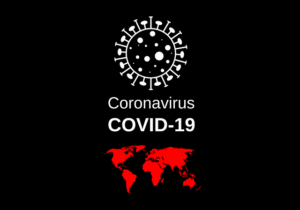If you’ve recently been in a car wreck in Bellevue, Redmond, Seattle, or anywhere in the Evergreen State, you might already know the physical pain and confusion a crash can bring. The road to recovery is often fraught with more than just medical hurdles—it’s also about securing your future and protecting your rights. That’s where an experienced car accident injury lawyer in Washington comes into play. In this post, the R Martin Law Group, led by the nationally ranked attorney Rich Martin, will guide you through what are the most common car accident injuries and legal steps, the critical importance of medical documentation, and how you can secure the compensation you deserve.
We’ll also dig into nuanced injury topics, like how to prove a distal radius fracture was caused by a car crash and the long-term legal implications of spinal cord injuries from car accidents. Most importantly, you’ll walk away knowing how to legally protect yourself after a car accident injury—from the chaotic scene at the roadside all the way to the last gavel bang in court (if it comes to that). Buckle up; this information could safeguard your health, wallet, and future.
What Are the Most Common Car Accident Injuries and Legal Steps?
Car accidents don’t discriminate—they can happen to anyone, at any time. And the aftermath? It can be a tangle of both physical wounds and legal headaches. A seasoned car accident injury lawyer in Washington will tell you that certain injuries crop up over and over after crashes—and each brings unique legal considerations.
The 10 Most Common Car Accident Injuries
Let’s break down the typical injuries from vehicle collisions. You might be surprised at both their variety and seriousness:
- Whiplash and Neck Injuries: These occur when your head is snapped forward and backward abruptly. Beyond the obvious soreness, soft tissue damage can lead to chronic pain. Essential to document with an ER visit!
- Back and Spinal Cord Injuries: Herniated discs, fractured vertebrae, or even paralysis can occur. Don’t mess around here—these injuries often have life-altering consequences and significant legal ramifications.
- Concussions and Traumatic Brain Injuries (TBI): If you strike your head (even lightly), you could suffer mild or severe brain trauma, leading to memory problems, headaches, or long-term cognitive issues.
- Broken Bones and Fractures: Common in T-bone and head-on collisions, especially involving arms, legs, ribs, hips, and wrists—like the notorious distal radius fracture.
- Lacerations and Bruises: Cuts, scrapes, and deep bruises are frequent, particularly from shattered glass or impact with interior surfaces.
- Chest Injuries: Think fractured ribs and even internal injuries caused by seatbelts and airbags—a necessary evil in safety that sometimes brings its own set of woes.
- Facial Injuries: Cuts, broken noses, or jaw injuries come from forceful collisions with dashboards, windshields, or airbags.
- Crush Injuries: Limbs or other body parts caught between car structure or objects—these are devastating and sometimes life-changing.
- Internal Bleeding and Organ Damage: Hidden and incredibly dangerous. Always get checked out, even if you feel fine after a big jolt—internal bleeding is a silent threat.
- Soft Tissue Injuries: Sprains, strains, and tears of muscles, ligaments, and tendons. They may sound minor, but untreated, they linger and limit you.
Immediate Legal Steps After Car Accident Injuries in Washington
Here’s a step-by-step, no-nonsense approach to protecting yourself legally if you’re ever unlucky enough to be in a crash:
- Stop and Stay Put: Never, ever leave the scene—doing so can turn a bad day into a legal nightmare!
- Call 911: Immediate reporting is both responsible and legally required. Plus, police and medical reports are vital evidence.
- Document Everything: Snap photos, jot down names, gather contact info from witnesses, and trade insurance details.
- Don’t Admit Fault: Even an innocent “sorry” can haunt you later in legal claims! Keep your comments factual and minimal.
- Get Medical Attention ASAP: Have every nick and cranny checked out—delay gives insurance companies room to cast doubt about whether your injuries are truly crash-related.
These steps form the backbone of how to legally protect yourself after a car accident injury—building a foundation that no adjuster or insurance defense can easily topple.
Why Is Medical Documentation Important for Car Accident Injury Claims?
Let’s cut to the chase: why is medical documentation important for car accident injury claims? In a word—proof. Or, for the legally inclined: evidence. Insurance companies and defense lawyers are notorious for picking apart even the smallest gaps in your treatment records.
The Power of Medical Records in Your Personal Injury Case
- Causation: To win a settlement or court award, you must prove a direct link between the accident and your injuries. Detailed ER reports, doctor’s notes, imaging (like X-rays or MRIs), and ongoing treatment records are the unshakeable backbone of your case.
- Severity: Judges, juries, and claims adjusters are more likely to believe your injury if you have crystal-clear, day-by-day documentation showing pain, treatment, and prognosis.
- Damages: Every bill, prescription, and therapy session should be saved—these translate into dollars recovered for you.
- Fending Off Defense Tactics: Insurers may try to undercut your claim, arguing your injury is “not serious” or “pre-existing.” Solid records silence that noise.
Pro Tip: If your doctor prescribes follow-up or therapy, stick with it religiously. Gaps in treatment can be used against you, suggesting you weren’t really hurt.
How to Legally Protect Yourself After a Car Accident Injury
Wondering how to legally protect yourself after a car accident injury in Washington? The answer is all about prompt action and detail. Follow this foolproof plan:
1. File a Police Report
Even if you think it’s only a fender bender, always insist on a police report. This document becomes the backbone of your legal claim.
2. Notify Your Insurance Company
Don’t drag your feet here—report the accident as soon as practicable. Washington is an “at-fault” state, meaning liability will be a center stage discussion during all negotiations.
3. Gather Evidence
Your smartphone can be your best friend. Photograph:
- The scene
- Your injuries
- Vehicle damage
- Traffic signs or signals
- Roadway conditions
Also, obtain witness statements if possible. After you leave, keep meticulous records of all medical care and expenses.
4. Consult a Car Accident Injury Lawyer in Washington
Negotiating with insurance companies is not a DIY job, especially if injuries are serious or liability is being contested. A skilled attorney—like those at R Martin Law Group—can help you:
- Assess the real value of your claim
- Avoid rookie mistakes
- Push back against lowball settlements
- Take your claim to court if needed
5. Know the Fault Rules
Washington practices “comparative fault”—meaning your settlement can be reduced by your percentage of fault. A smart lawyer makes sure blame doesn’t get unfairly pinned on your shoulders.
How to Prove a Distal Radius Fracture Was Caused by a Car Crash
Now let’s zoom in on a common and often misunderstood injury—the distal radius fracture, better known to many as a “broken wrist.”
Key Steps to Establish Your Claim
- Immediate Medical Attention: Head to an ER or urgent care the same day as the crash. Delays create doubt.
- Imaging Evidence: X-rays and medical records from the day of the accident provide a crucial timestamp, linking the fracture directly to the collision.
- Symptom Diary: Keep a daily journal describing pain, swelling, loss of function, and any treatments. This can be invaluable in court or settlement talks.
- Expert Testimony: Your attorney may call upon orthopedic surgeons or medical experts to explain how the mechanics of the crash naturally resulted in your fracture.
Because fractures like a distal radius break can lead to long-term complications—including chronic pain, restricted wrist motion, and reduced work capability—they often boost the value of a claim. Insurance companies, however, love to argue these were pre-existing or caused elsewhere—don’t let them! Document everything.
Long-Term Legal Implications of Spinal Cord Injuries from Car Accidents
Spinal injuries can be absolutely life-changing, and the long-term legal implications of spinal cord injuries from car accidents can reverberate for decades—impacting not just your well-being, but your career and family life too.
Factors That Magnify Legal Claims Following Spinal Cord Injuries
- Ongoing Medical Needs: Spinal injuries may require surgery, rehab, adaptive equipment, and long-term therapy. All of these costs—sometimes reaching into millions over a lifetime—must be captured in your legal claim.
- Loss of Income/Potential Earnings: When an injury stops you from returning to work or reduces your earning potential, a claim must include not only lost wages to date but projected future losses.
- Pain and Suffering – Amplified: Washington law permits compensation for physical pain, emotional distress, and lifestyle limitations. These awards can be substantial in spinal cord injury cases.
- Life Care Planning: Complicated spinal injuries may require lifelong care. Your lawyer may enlist health economists or life care planners to estimate these crucial future costs.
A top-tier car accident injury lawyer in Washington will fight for a settlement that accounts for both today’s tribulations and tomorrow’s uncertainties.
Sample Table: Common Injuries and Legal Actions
Here’s a handy reference showing how immediate actions and legal steps interplay for each type of injury:
| Injury Type | Immediate Action | Legal Step |
|---|---|---|
| Whiplash | Seek medical eval | Document, include in claim |
| Spinal injuries | Immobilize & emergency care | Save all medical records, call attorney |
| Brain injuries (TBI) | Go to ER, monitor symptoms | List all expenses, collect records |
| Broken bones/fractures | X-rays, cast or surgery | Document lost work, medical bills |
| Lacerations/bruises | Clean, treat, seek care | Photograph, keep records |
| Chest injuries | ER assessment | Claim for damages |
| Facial injuries | Medical/dental care | Document scarring, get expert opinion |
| Crush injuries | ER trauma care | Include long-term care in claim |
| Internal injuries | CT scans, monitoring | Comprehensive medical record |
| Soft tissue injuries | Physical therapy | Retain all treatment receipts |
Protecting Yourself Legally After a Car Crash
- Prompt Medical Care: Act immediately after an injury—delays weaken your claim.
- Meticulous Documentation: Save everything—from police reports and medical records to receipts, photos, and witness statements.
- Legal Guidance is Critical: Don’t face off with insurance giants alone. The right car accident injury lawyer in Washington can make the difference between stress and security.
- Know Your Rights: Whether your injury is a “simple” whiplash or a catastrophic spinal cord injury, you deserve full compensation.
- Maximize the Power of Medical Records: These are your best armor against insurance challenges—never underestimate their value.
Get the Legal Muscle You Deserve—Contact R Martin Law Group Today
The aftermath of a car accident is no time to go it alone. Injuries—no matter how minor they may seem—can blossom into major life disruptions. The law is on your side, but so too are insurance companies ready to challenge and minimize your suffering. Don’t let them!
If you or a loved one has suffered an injury in a crash, turn to the proven expertise of R Martin Law Group. Rich Martin is recognized among America’s top personal injury lawyers, renowned for his aggressive advocacy and compassionate care. We’ve seen it all, and we’ll fight tirelessly to get you every penny you deserve.
Call us, or fill out our online form today, and take the first step toward justice and peace of mind. Your future starts with the right legal partner—don’t wait until tomorrow to protect it.








